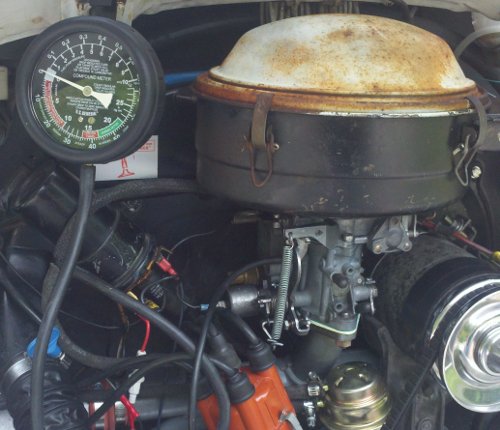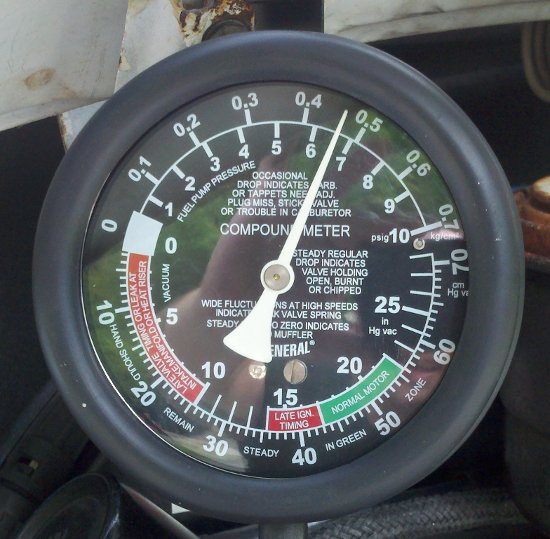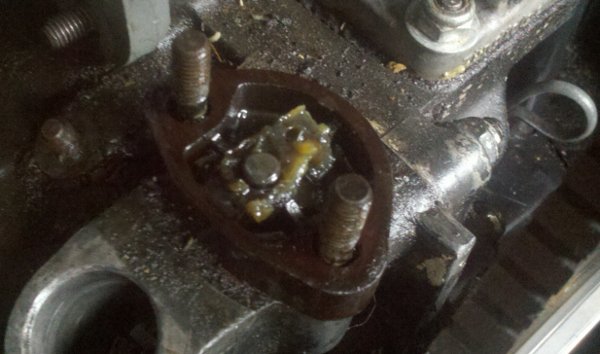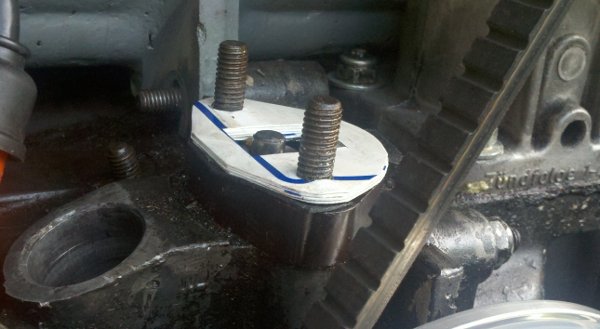I struggled since last fall and this spring getting my vintage Beetle to run right. It would drive Ok, but the idle was never smooth. I had a 34PICT-3 carburetor that was just about right, but I had the absolute dickens of a time getting the California-spec 34PICT-4 to work at all. It had always had an unstable idle. It seemed to me like it was running too lean; maybe a leaking intake manifold, or perhaps leaking around the throttle shaft.
To try to combat this problem, I had new bushings put into a couple of carburetor bodies. Although the throttle shafts were much tighter, it didn't change the behavior significantly.
People on thesamba.com kept bugging me about the fuel pressure. Obviously if fuel pressure is low, then the car won't run right because it's not getting enough fuel. However, too much fuel pressure is also a problem. If you have a lot too much fuel pressure, the float in the carburetor bowl has to rise higher to shut off the fuel flow, and so the fuel level in the bowl rides higher than it should. THe level in the bowl is a very important part of how the carburetor runs, so too much fuel pressure can be a significant problem.
It turns out that Harbor Freight has a fuel pressure testing kit. I
bought bought one and set it up to measure my fuel pressure. I put a
T in the line from the pump to the carburetor, and had the gauge set
up the read the pressure:

I started the engine and looked at the pressure. It's supposed to be
in the range of 1.5 to 3.5 psi:

Oops.
So the first thing I did was remove the incorrect-spec fuel pump that I had on the engine. I fought with a carburetor problem last year, which turned out to be the carb float not fitting. During that process I'd changed the fuel pump a couple of times, and ended up with one that I'd gotten from a not-very-good VW parts place that wasnt' quite right. It worked, but the hose fittings were the wrong size, and judging by this pressure test, weren't the right internal specs either. Once I put a proper-spec pump on the engine, the fuel pressure was much lower, but still slightly above 4 psi.
The way to adjust the fuel pressure is to shim the pump up. Here's
the pedestal that the fuel pump rests on:

The brown thing is the plastic pedestal that the pump sits on. It
insulates the pump from the engine block so that the pump body doesn't
get hot and cause vapor lock. The steel rod in the middle of the
pedestal moves up and down as the engine turns, actuating the pump.
You add shims on top of the pedestal, which raises the pump body so
that the steel rod can't actuate it as far.
You can stack up gaskets on the flange, but they're pretty thin and it
can take a lot of them. I instead made my own out of a sheet of
plastic; I cut them out with razor blade. It only took about 5
minutes per shim.

Here's all four shims on the pedestal ready to install the pump:

Changing pumps and shimming didn't make the engine run right; there was no noticable change (although the shims did bring the fuel pressure down into the correct range). I don't if the high fuel pressure would have prevented the engine from running right once I got the carburetor fixed, but now I know that it's within the proper spec.